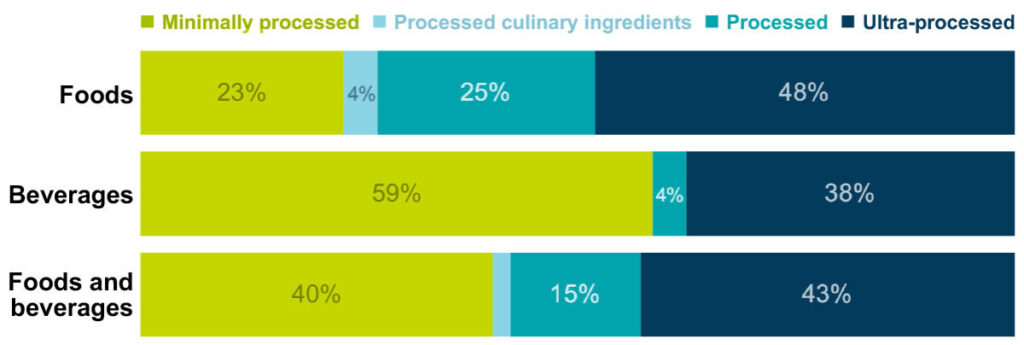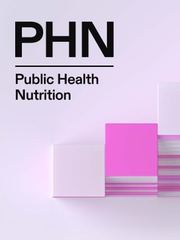A new study from researchers at the Global Food Research Program at UNC-Chapel Hill and The George Institute for Global Health highlights how deeply ultra-processed foods (UPFs) dominate grocery purchases in the United States and how these patterns vary by race, income, and education level.
Using nationally representative data from the NielsenIQ Homescan Consumer Panel, researchers examined more than 33 million packaged food and beverage purchases from 2020 across nearly 60,000 U.S. households. Each purchased item was classified using the Nova food processing system, which identifies foods based on their level of industrial processing.
“Our findings show that almost half of all packaged food purchases and over one-third of beverage purchases were ultra-processed,” said Barry Popkin, PhD, co-author and W.R. Kenan Jr. Distinguished Professor of Nutrition at UNC-Chapel Hill’s Gillings School of Global Public Health. “This has serious implications for public health, given the strong links between UPF consumption and chronic, nutrition-related diseases like obesity, cancer, and heart disease.”

The study found that certain food categories were overwhelmingly ultra-processed: 90% of carbonated soft drinks, 81% of mixed dishes and soups, and 71% of sweets and snacks fell into the UPF category. These three categories made up 36% of total purchases. Meanwhile, minimally processed categories like fruits, vegetables, nuts, and oils made up only a small fraction of overall purchases at 12%.
Importantly, disparities were observed across socioeconomic groups. Households with lower incomes and lower education levels purchased a higher proportion of UPFs compared to higher-income, higher-education households. Race and ethnicity also played a role, with non-Hispanic White households purchasing a significantly higher proportion of UPFs than Black, Hispanic, or other race/ethnic groups.
“Understanding these purchasing patterns is crucial for shaping effective food policies,” said Elizabeth Dunford, PhD, lead author of the study and researcher at The George Institute and UNC-Chapel Hill’s Gillings School of Global Public Health. “Policies that aim to reduce ultra-processed food consumption must take into account how access, marketing, and affordability impact different communities.”

The findings underscore the urgent need for policy interventions that address not just high levels of nutrients like sugar, sodium, or saturated fat in the food supply, but also the level of food processing. Current U.S. dietary guidelines focus on nutrient-dense foods but do not make recommendations based on food processing levels, unlike emerging guidelines in some other countries.
“This research reinforces that we need a shift toward promoting less processed food options and reducing the market dominance of ultra-processed products,” Popkin said. “Without it, diet-related health disparities are likely to persist or even widen.”
The study, “Exploring disparities in the proportion of ultra-processed foods and beverages purchased in grocery stores by US households in 2020,” is now available in Public Health Nutrition.
This study was funded primarily by Bloomberg Philanthropies.
AUTHORS
Barry M. Popkin
Donna R. Miles
Elizabeth K. Dunford
Read the full study in Public Health Nutrition
Learn more about ultra-processed foods and the Nova classification system in our fact sheet:
MORE GFRP RESEARCH ON ULTRA-PROCESSED FOODS

New study charts policy path to identifying ultra-processed foods and beverages high in nutrients of concern
Read more…

Ultra-processed products make up nearly half of low-income South African adults’ diets
Read more…

